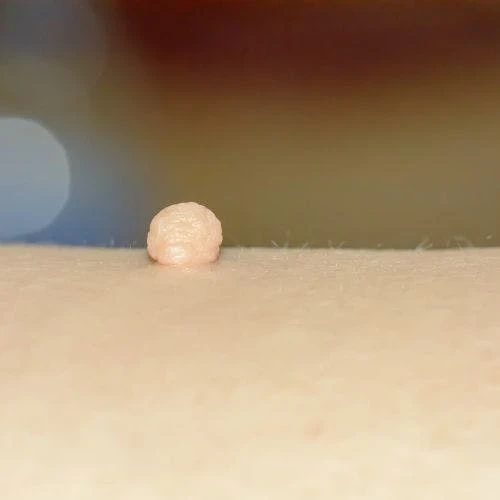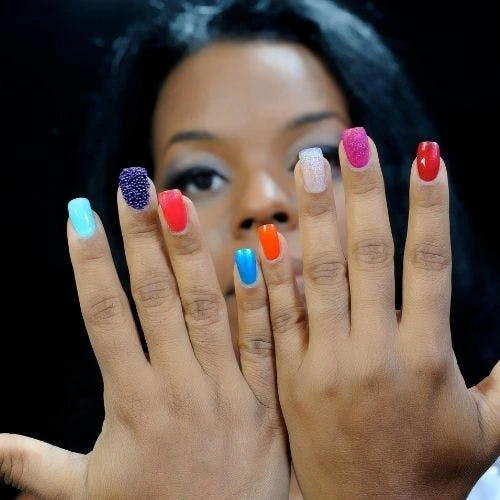Vaginal Skin Tags Causes, Symptoms & Treatment
Genital skin tags like those that can occur in the vaginal area are typically harmless growths that are made of loose fibers of collagen. They are typically very small, usually no larger than the size of a pencil eraser. They also have been described as looking like a tiny deflated balloon or the head of a pin in the groin areas. It is one of the skin conditions associated with the human papillomavirus. A large size skin tag may be uncomfortable if they are in a sensitive area of the vagina or the surrounding skin and labia.
Skin tags can also contain blood vessels and usually can look like a mole, wart, or a piece of skin that is hanging loosely. The proper diagnosis of any unusual skin lesions in the genital or vaginal area is a must. This is because the appearance of vaginal skin tags often gets confused with genital warts or other things which can be infectious or cancerous. Also, the places where vaginal skin tags grow are quite sensitive and need a proper diagnosis.
Causes Of Vaginal Skin Tags
There is no definite cause for the development of skin tags in the genital region, but it is always a good idea to have it checked by a dermatologist. Researchers suggest that people with human papillomavirus get skin tags. If your sexual partner has the HPV virus, it is likely that you will also contract it from them during sexual intercourse, oral sex, or other sexual contact. While the exact cause of skin tags is not known, the other risk factors which can cause skin tags include being overweight, due to pregnancy, having a genetic predisposition to cutaneous skin tags, or having diabetes mellitus and insulin resistance.
According to a 2010 study (1), most people with skin tags had insulin resistance. It also suggests that vaginal skin tags can also be related to a high body mass index. Therefore, knowing your medical history is important when it comes to determining if you have any medical problems that may be associated with these small bumps. Friction in sensitive areas like skin folds is another cause of vaginal skin tags. Friction from clothing or underwear under the legs can favor the growth of skin tags. During pregnancy, hormonal changes may increase the risk of developing vaginal skin tags in women.
Symptoms & Diagnosis Of Skin Tags On The Vagina
Skin tags usually have no prior symptoms or any noticeable clinical manifestations. These often asymptomatic skin growths are not commonly painful. But if they get caught in clothes or scraped while shaving, then it may cause skin irritation or infection. If you see any bleeding on the skin tag or if it is painful, then you need to consult a doctor.
Proper diagnosis of the skin tag includes a visual examination of the affected area. A doctor can ask you to take a test for HPV if there are quite a number of skin tags near your genital area and they are concerned about genital warts.
Removal Of Vaginal Skin Tags
Vagina skin tags are loose and can be found in an area where the skin is folded or an area with dry skin. As they are usually harmless, if you don’t feel any irritation and having it on your body doesn’t bother you, there is no need for treatment as long as your doctor tells you that it is harmless after examining you. But, if it does bother you, you should consult a doctor for its treatment or removal. Home remedies, like apple cider vinegar or topical creams, are absolutely not recommended.
There are several treatment options when it comes to skin tag removal. The good news is once removed, it is very unlikely that the skin tag will come back in the treated area. However, if you are prone to these small skin growths, you may get more.
Related: Best Moisturizer After IPL Treatment
Surgical Removal Of Vaginal Skin Tag
The first way to remove a vaginal skin tag is through simple surgical removal. This is usually done by a board-certified dermatologist or a board-certified gynecologist. The doctor will use a numbing solution in the area before removing the skin tag.
Cryotherapy For Vaginal Skin Tag Removal
Another way to remove a vaginal skin tag is through cryotherapy. This involves freezing the skin tag with liquid nitrogen to remove it. This is a relatively quick and painless procedure that can be done in a doctor’s office. This process will freeze and destroy the abnormal or unwanted tissue. Cryotherapy works by applying liquid nitrogen to the affected area, which freezes the tissue and causes it to die off. As the tissue thaws, a blister may form, and the dead tissue will eventually fall off. Liquid nitrogen is an extremely cold substance that has a temperature of -196°C (-320°F), and it is stored in special containers that keep it at this low temperature. When used in cryotherapy, liquid nitrogen is applied to the skin using a cotton swab or spray device. The duration and intensity of the application will depend on the size and location of the tissue being treated.
Electrocautery For Removal Of Vaginal Skin Tag
Finally, a patient can have a skin tag on the vagina removed by electrocautery. Although removing a vaginal skin tag is a fairly simple procedure, it is important to see a medical professional in order to have it removed. Do not try to remove a skin tag at home as it can be dangerous and can cause infection, scarring, or bleeding. Additionally, when your doctor takes a skin tag out they can send it to the lab for histopathology of the specimen to further distinguish it from malignant neoplasms, like a basal cell carcinoma.
Vaginal Skin Tags: Summary
Vaginal skin tags may occur in any woman of any age. Most of the time, these are harmless, but if you are concerned or it is bothering you, do consult your doctor immediately. Do not wait for the problem to grow or to turn into something serious.
Sources:
(1) https://doi.org/10.1590/S0365-05962010000100003
(2) Russell AL, Haagsma B, Madhuri TK. Primary vaginal adenocarcinoma of intestinal type or occult metastatic colon cancer: a diagnostic dilemma from a vaginal skin tag. Int J Womens Health. 2019 Apr 1;11:223-228. doi: 10.2147/IJWH.S142002. PMID: 31015769; PMCID: PMC6448537.
We discuss products we think are useful to people. If you buy something through our links, we may earn a commission. Remember to check with your personal physician to see if a product recommended is right for you.








